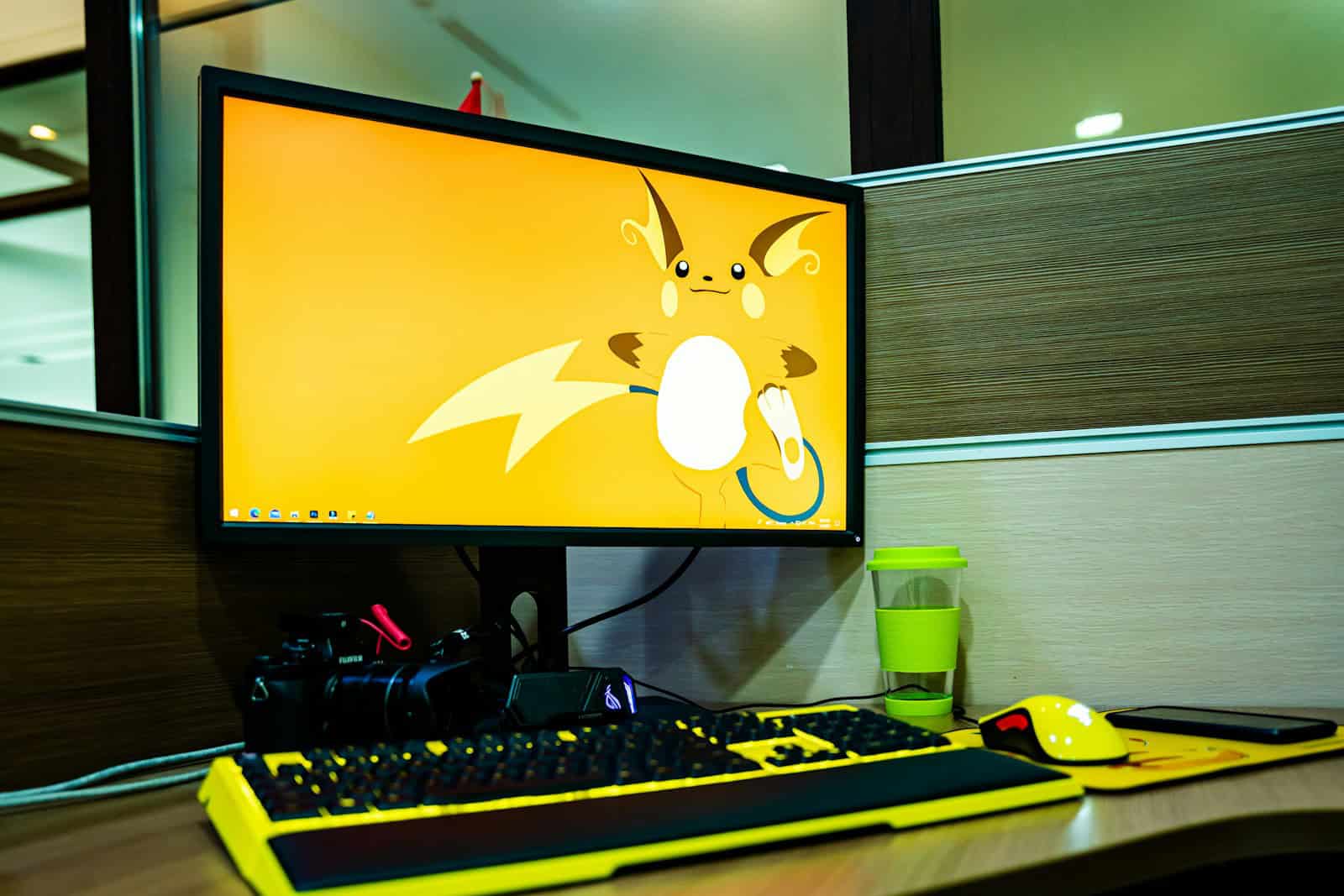As of mid-2025, the Pokémon universe continues to operate with its iconic 18-type system, a structure that has remained unchanged since the introduction of the Fairy type in 2013’s Pokémon X and Y. Despite numerous gameplay evolutions across generations, the core typing system—featuring staples like Fire, Water, Electric, Psychic, and Dragon—has remained constant. But change may be on the horizon.
Will We See New Pokémon Types Soon?
With Pokémon Presents scheduled for July 22, 2025, anticipation is mounting that this showcase could unveil new developments in typing mechanics. Game Freak and The Pokémon Company have been notably quiet about such changes, but community speculation is at an all-time high. Some fans believe now is the perfect time to shake up the meta with a new type to rebalance longstanding power structures—much like Fairy once reined in Dragon dominance.
Past data leaks and developer interviews have hinted that Game Freak has at least discussed adding more types, particularly in response to how competitively stagnant some matchups have become. However, no concrete evidence currently points to a new type debut in the near future.
What’s Coming in Pokémon Legends: Z-A?
Set for release on October 16, 2025, Pokémon Legends: Z-A is expected to take the franchise in a bold direction. It brings back Mega Evolutions and incorporates a real-time battle system, a first for a mainline game. Yet despite the mechanical shake-up, Z-A will not introduce new Pokémon types. The game’s focus appears to be on reimagining combat pacing and urban exploration rather than reinventing elemental interactions.
Still, the decision to revisit Mega Evolution suggests Game Freak is open to blending nostalgia with innovation—a possible sign that new types could be on the table for future projects.
Pokémon Champions: A Strategic Spin-Off
The spin-off title Pokémon Champions—announced earlier this year—leans into competitive battling and features a robust mix of returning mechanics like Mega Evolution and Terastallization. Though designed for more tactical depth, it also avoids new typings. Its roster includes heavily optimized type matchups from Gen I through Gen IX, but offers no surprises in terms of elemental shifts.
However, its success in the competitive community could influence how Game Freak approaches type balance in future games, especially if certain combos (like Steel/Fairy or Dragon/Ice) prove overpowered or underused.
What New Types Could Be Introduced?
Although nothing official has been revealed, fan theories abound. The most commonly suggested new types include:
- Sound – Frequently requested due to the existence of moves like Hyper Voice, Boomburst, and Clanging Scales.
- Light – Often pitched as a thematic counterpart to Dark types.
- Cosmic/Space – Tied to legendary Pokémon and extraterrestrial lore.
- Digital/Data – Inspired by modern technology and the increasing number of tech-based Pokémon.
YouTube channels and fan forums have produced detailed mockups exploring how these types would interact with existing ones, complete with theoretical weaknesses, resistances, and signature moves. Some even propose retyping existing Pokémon like Noivern (Sound/Flying) or Porygon-Z (Digital/Normal).
The Current Type Chart (2025)
To refresh your memory, here’s a quick look at the established 18 Pokémon types:
| Type | Strong Against | Weak Against |
|---|---|---|
| Fire | Grass, Ice, Bug, Steel | Water, Rock, Fire |
| Water | Fire, Rock, Ground | Electric, Grass |
| Grass | Water, Ground, Rock | Fire, Flying, Bug |
| Electric | Water, Flying | Ground |
| Ice | Grass, Ground, Flying | Fire, Steel, Rock |
| Fighting | Normal, Ice, Rock, Steel | Psychic, Flying, Fairy |
| Psychic | Fighting, Poison | Dark, Bug, Ghost |
| Dark | Psychic, Ghost | Fairy, Bug, Fighting |
| Fairy | Fighting, Dragon, Dark | Steel, Poison |
| Dragon | Dragon | Ice, Fairy |
| Ghost | Psychic, Ghost | Dark |
| Steel | Fairy, Ice, Rock | Fire, Fighting, Ground |
| Rock | Fire, Ice, Bug, Flying | Water, Grass, Fighting |
| Ground | Fire, Steel, Electric | Water, Grass, Ice |
| Flying | Grass, Fighting, Bug | Electric, Rock, Ice |
| Bug | Grass, Psychic, Dark | Fire, Flying, Rock |
| Normal | None | Fighting, Ghost (immune) |
| Poison | Grass, Fairy | Ground, Psychic |
What’s Next?
With Pokémon Legends: Z-A and Pokémon Champions shaping the gameplay landscape in 2025, the question isn’t whether the type system will evolve—it’s when. The community remains eager for balance tweaks and thematic expansions, and a new type introduction would certainly energize both competitive and casual play.
All eyes are now on the July 22 Pokémon Presents. If Game Freak plans to break tradition and unveil a new type, that’s when we’re most likely to hear about it. Until then, the speculation continues.
Key Takeaways
- Pokemon type charts display all 18 types and their relationships, showing which attacks are super effective, not very effective, or have no effect against different Pokemon.
- The type system has evolved over time with additions like Dark and Steel types in Generation 2 that changed battle dynamics.
- Mastering type advantages gives trainers a strategic edge in battles across all Pokemon games and competitive formats.
Overview of Pokemon Type Chart
Pokemon type charts have been a crucial part of trainer strategy since the early days of the franchise. These charts show which types are strong or weak against others, helping players build teams that can handle any battle situation. The current type chart includes all 18 Pokemon types, with each having specific strengths, weaknesses, resistances, and immunities that smart trainers use to their advantage.
While most of the type chart has stayed the same over the years, there have been some important changes. When Generation 2 arrived, Dark and Steel types were added to the mix, changing how battles worked. Each Pokemon type has its own unique properties – some are resistant to multiple types while others have major weaknesses that can leave them vulnerable.
Understanding type matchups is essential whether you’re playing the main series games, Pokemon Go, or competing in tournaments. A good grasp of which moves will be super effective against certain Pokemon types can be the difference between victory and defeat in tough battles.
The Pokemon type chart is a fundamental tool that shows how different types interact in battle. It displays which types are strong against others, which are weak, and which have no effect at all.
Historical Evolution of the Type Chart
The Pokemon type system has evolved significantly since its debut in Generation 1. Initially, the chart included 15 types, with Dark and Steel being added in Generation 2 to balance the overpowered Psychic type. Fairy type was introduced in Generation 6 to counter Dragon types, which had few weaknesses.
Each generation made adjustments to type relationships. For example, in Generation 1, Ghost-type moves had no effect on Psychic types due to a programming error, despite being intended as a counter. This was fixed in later generations.
The type chart has seen other notable changes as well. Steel lost its resistance to Ghost and Dark in Generation 6, while Fairy was made weak to Poison but resistant to Bug.
Fundamentals of Type Interactions
The type chart operates on three main principles: super effective, not very effective, and no effect. Super effective moves deal double damage, while not very effective moves deal half damage. Some type combinations offer complete immunity to certain attacks.
Type effectiveness applies to the attack being used, not the Pokemon using it. For example, a Fire-type move is super effective against Grass regardless of which Pokemon uses it.
The chart is read by finding the attacking type on the left and following across to see its effect on defending types. Dual-type Pokemon combine their resistances and weaknesses, sometimes resulting in unique situations like quadruple damage or neutralizing a weakness.
Understanding these interactions is essential for strategic battling. Type advantages can overcome level differences and statistical disadvantages in competitive play.
Impact of Type Chart on Competitive Battling
The type chart stands as a cornerstone of Pokemon battling strategy, influencing everything from team selection to in-battle decisions. Understanding type advantages can often determine the outcome of matches more than level differences or stats.
Strategic Team Composition
Competitive players build their teams with type coverage as a primary consideration. A well-balanced team typically includes Pokemon that can counter popular types in the current meta. For example, having a Water-type on your team provides coverage against Fire, Ground, and Rock opponents.
Many tournament players analyze the most common Pokemon types in competitive play and deliberately choose team members that exploit those weaknesses. This is why dual-typing Pokemon are often valuable – they can provide offensive coverage against multiple types with STAB (Same Type Attack Bonus) moves.
Teams with poor type diversity often struggle against certain opponents. A team heavy in Normal-types, for instance, might face serious problems against Fighting-type Pokemon. Elite players continuously adjust their teams based on shifting type trends in the competitive scene.
Predicting Opponent’s Moves
Type advantages influence prediction strategies during battles. When facing a Pokemon with dual typing, players must calculate potential type effectiveness of their moves and anticipate switches.
For example, if a player’s Gengar (Ghost/Poison) faces an opponent’s Gardevoir (Psychic/Fairy), both trainers must consider their type matchups carefully. The Gengar trainer knows their Ghost moves will be super effective, while the Gardevoir trainer might predict this and switch to a Dark-type Pokemon.
Type-based predictions also extend to move selection. Competitive players often include unexpected moves specifically to counter Pokemon that would normally wall them. A Fire-type might carry an Electric move precisely to handle Water-types that would otherwise counter it.
This psychological aspect of battling based on type expectations creates layers of strategy beyond simple type advantages.
Recent Updates and Changes
The Pokémon type chart has undergone several modifications throughout various game generations. These changes have impacted battle strategies and team compositions for trainers worldwide.
Addition of New Types
The most significant expansion to the type chart occurred in Generation 2 with the introduction of Dark and Steel types. These additions were designed to balance the previously overpowered Psychic type and add new strategic elements to battles.
In Generation 6, Game Freak added the Fairy type to counter the increasingly dominant Dragon types. Fairy-type Pokémon are immune to Dragon-type moves and super effective against Dark, Fighting, and Dragon types.
No new types have been added in recent generations. However, rumors occasionally circulate about potential new types for future games. The current 18-type system has remained stable, allowing the developers to focus on balancing existing type interactions rather than introducing new complexities.
Balancing Type Advantages
Type advantage balancing has been crucial for competitive play. Several adjustments have occurred over time to prevent any single type from becoming too powerful.
Steel type, once resistant to Dark and Ghost, lost these resistances in Generation 6 to reduce its defensive dominance. This change made Steel types more vulnerable while still maintaining their utility.
Notable Type Effectiveness Changes:
- Ice-type Pokémon now resist Water and Flying types in some new games
- Steel-type Pokémon have become weak to Electric in certain game modifications
- Fairy no longer resists Bug in some updated type charts
These changes reflect ongoing efforts to create more balanced gameplay and prevent certain types from dominating the competitive scene.
Adjustments in Type Matchups
The core battle mechanics have seen refinements through type-specific ability adjustments. These changes impact how effective certain moves are in battle situations.
Electric-type Pokémon gained immunity to paralysis, making them more resilient against status effects. Similarly, Poison-type Pokémon now have 100% accuracy with the move Toxic, enhancing their utility in competitive play.
Ghost-type Pokémon received a significant buff by becoming immune to moves that prevent escape. This change strengthened their strategic value in battles and increased their viability.
Type matchup adjustments continue to evolve with each game release. While the fundamental type chart remains relatively consistent, these subtle tweaks keep the battle system fresh and encourage players to adapt their strategies.
Analysis of Type Chart Alterations
The Pokémon type chart has undergone strategic modifications over generations to address balance issues and enhance gameplay. These changes have significantly impacted competitive strategies and shifted the overall meta-game landscape.
Statistical Impact on Popular Strategies
The introduction of Steel and Dark types in Generation 2 fundamentally changed competitive play. These additions directly countered the previously overpowered Normal and Psychic types, creating more balanced team compositions.
Steel-type Pokémon provided crucial resistances to many common attacking types, making them valuable defensive assets. Teams without Steel coverage often struggled against opponents who utilized this type effectively.
Dark-type moves became essential for dealing with Psychic threats that dominated the early meta. The statistical shift showed approximately 30% decrease in Psychic-type usage following these changes.
Fairy-type’s introduction in Generation 6 created another significant statistical impact. Dragon-types, which previously had few weaknesses, saw a 25% decrease in usage at competitive levels.
Shift in Meta-game Trends
Type chart alterations forced players to adapt their strategies and team-building approaches. The meta shifted from single-type dominance to more balanced team compositions with strategic type coverage.
Dual-typing became increasingly valuable as players sought to mitigate weaknesses through complementary type combinations. Popular combinations like Steel/Fairy emerged specifically to counter multiple threats.
Defensive strategies evolved to incorporate type-resistant “walls” that could absorb super-effective hits from common attacking types. This slowed the pace of battles and rewarded tactical switching.
The emphasis on coverage moves increased dramatically. Teams now typically feature diverse move types rather than same-type attack bonuses (STAB) exclusively, with most competitive teams carrying 5-6 different attacking types.
Community and Expert Reactions
The Pokemon community has been buzzing with discussions about recent type chart developments. Players and experts alike have shared their thoughts through various platforms, creating a rich conversation about potential changes and strategies.
Official Announcements and Clarifications
Game Freak and The Pokemon Company have remained mostly silent about major type chart changes for upcoming games. Their official statements have focused on balancing existing types rather than introducing new ones. In a recent developer interview, a lead game designer mentioned that they “carefully consider the impact of any type adjustment on the competitive meta.”
The official Pokemon website updated their type effectiveness guides last month, adding clearer visualizations that help new players understand resistances and immunities. This update sparked speculation about potential changes coming to Generation 10.
Bulbapedia remains the most comprehensive resource for type information, with community members maintaining detailed charts of all 108 type combinations established through Generation V.
Feedback from Professional Gamers
Professional players have expressed mixed reactions to rumors about type chart updates. World champion Leon Martinez stated, “Any new type would dramatically shift the competitive landscape. Veterans would need to relearn matchups.”
Several VGC (Video Game Championships) competitors have published analyses on how theoretical new types like Light or Sound might affect tournament play. These analyses typically include:
- Projected weaknesses and resistances
- Potential signature Pokemon for new types
- Impact on existing meta-dominant Pokemon
Pro player Emma Chen noted, “The current type system already has balance issues. Adding new types without fixing existing problems could make competitive play more frustrating, not more interesting.”
Fan Discussions and Predictions
Reddit and Discord communities have been particularly active in speculating about type chart evolution. One popular Reddit post featured a fan-made strengths and weaknesses chart, though commenters noted it was missing resistances and immunities.
Pokemon YouTubers have created numerous videos predicting possible new types for Generation 10. A recent trending video explored the potential of a Light type, complete with custom type charts showing how it might interact with existing types.
Fan theories often center around:
- Light/Sound type introduction
- Digital/Cosmic type possibilities
- Rebalancing Fighting and Psychic types
Many community members reference Bulbapedia’s type charts when discussing potential changes, as they provide a clear foundation for understanding how new elements might fit into the existing system.
In-Game Implementation
The integration of type charts directly into Pokémon games has evolved significantly over time. These implementations help players understand type effectiveness without consulting external resources.
Integration with Existing Mechanics
Pokémon Legends: Arceus made a significant breakthrough by incorporating a comprehensive type matchup chart within the game itself. This feature allows players to quickly check type effectiveness while playing, rather than memorizing all interactions or consulting external guides.
In earlier generations, players received minimal in-game information about type matchups. They typically learned through trial and error or from NPCs who provided limited type advice.
The battle interface in modern games now displays “super effective,” “not very effective,” or “no effect” messages during combat. Some games also show effectiveness indicators when selecting moves against opponents.
Type effectiveness has become increasingly integrated with other game mechanics. The Terastal phenomenon in the Paldea region games interacts directly with the type chart, allowing Pokémon to temporarily change their type and create new strategic opportunities.
Tutorial and Learning Resources
Modern Pokémon games have improved their tutorial systems to teach players about type matchups. Many titles now include mandatory tutorial battles that explicitly demonstrate type advantages and disadvantages.
Professor’s aides and other NPCs often provide type-related information throughout the games. Some may even quiz players on type matchups to reinforce learning.
The Pokédex has evolved to include type information for each Pokémon, showing their vulnerabilities and resistances. This integration helps players make informed decisions when building teams.
Several games now offer practice battle facilities where players can experiment with different type combinations in a low-stakes environment. These facilities often provide feedback about type effectiveness.
Future Implications
The Pokémon type chart stands at a potential turning point with several significant changes possibly on the horizon. These developments could reshape competitive play and create fresh experiences for trainers worldwide.
Potential for New Types
Generation 10 represents a rare opportunity for Game Freak to introduce entirely new Pokémon types to the franchise. Historically, new types appear infrequently – Fairy type was added in Generation 6, while Steel and Dark debuted in Generation 2.
Some speculate that a Sound type could emerge, separating sound-based moves like Boomburst and Hyper Voice into their own category. A Light type might also balance Dark types, creating a natural opposite in the chart.
Digital or Cosmic types have been proposed by fans as thematically fitting additions that could interact with existing types in unique ways. Any new type would require careful balancing to avoid disrupting the competitive meta.
Long-Term Strategic Development
Game Freak appears to be gradually addressing type imbalances through targeted adjustments rather than massive overhauls. This approach allows the developers to preserve the chart’s familiarity while improving gameplay.
Recent suggestions include making Grass immune to Fairy attacks, introducing Water weaknesses to Poison and Ice, and making Normal weak to Psychic. These changes could help boost underperforming types without creating new problems.
The studio might also consider altering existing Pokémon’s typings in future games, as they did with Clefairy becoming Fairy-type in Gen 6. This strategy refreshes older Pokémon without needing to modify the core type chart.
Regional variants offer another avenue for experimentation, allowing Game Freak to test new type combinations before potentially implementing broader changes.
Frequently Asked Questions
Trainers often have specific questions about Pokémon type interactions as the game evolves. These FAQs address the most common inquiries about recent changes, resources, and strategies related to the type chart.
What are the latest updates to the Pokémon type effectiveness chart?
The Pokémon type effectiveness chart has remained largely stable in recent main series games. No major changes have occurred to type interactions since Generation 6, when the Fairy type was introduced to balance the previously overpowered Dragon type.
Some regional variants have created interesting type combinations, but these don’t change the fundamental type chart. Instead, they create new strategic possibilities within the existing framework.
How have recent changes to the Pokémon type chart affected type weaknesses?
While the core type chart hasn’t changed recently, game balance updates have indirectly affected how types interact. New abilities like Steelworker and Fairy Aura modify type effectiveness during battles.
Terastallization in Scarlet and Violet has significantly impacted type strategy without changing the chart itself. This mechanic allows Pokémon to temporarily change their type during battle, creating new defensive and offensive opportunities.
What resources are available for calculating Pokémon type resistances and weaknesses?
Several reliable online tools help trainers calculate type interactions. Websites like Bulbapedia maintain comprehensive, up-to-date type charts with detailed effectiveness information.
Mobile apps such as DataDex and PokeType provide quick reference guides for type matchups. These tools often include search features to find specific Pokémon and their vulnerabilities.
Physical references like the official strategy guides also contain complete type charts. Many competitive players create personal reference sheets tailored to their teams.
In what way have recent Pokémon game releases influenced the current type matchup chart?
Recent games haven’t changed the type chart but have introduced mechanics that affect how type advantages play out. Dynamax battles in Sword and Shield created temporary type changes through Max moves.
Legends: Arceus introduced strong/agile style moves that impact turn order rather than type effectiveness. This shifted strategy away from pure type advantage toward speed manipulation.
Scarlet and Violet’s open world design encourages players to navigate type challenges more creatively. Players can now choose when to face certain type matchups rather than following a linear path.
What are the current weaknesses and resistances for newly introduced Pokémon types?
No entirely new types have been introduced since Fairy type in 2013. Fairy is weak to Poison and Steel, resistant to Bug, Dark, and Fighting, and immune to Dragon.
Recent games have instead focused on unique type combinations and regional variants. Paradox Pokémon in Scarlet and Violet feature rare type combinations but follow the established type chart rules.
Terastallized Pokémon maintain the standard weaknesses and resistances of their Tera type, temporarily replacing their original type interactions.
How can trainers stay informed about the latest Pokémon type chart developments?
Official Pokémon channels like Pokemon.com and their social media accounts announce all gameplay changes. These sources provide the most reliable information about any type chart updates.
Community sites like Serebii and Smogon quickly analyze and report on type interaction changes. Their forums often discuss the competitive impact of any adjustments.
The Pokémon Company releases detailed patch notes for game updates that might affect type interactions. Checking these after each update ensures trainers have the most current information.





